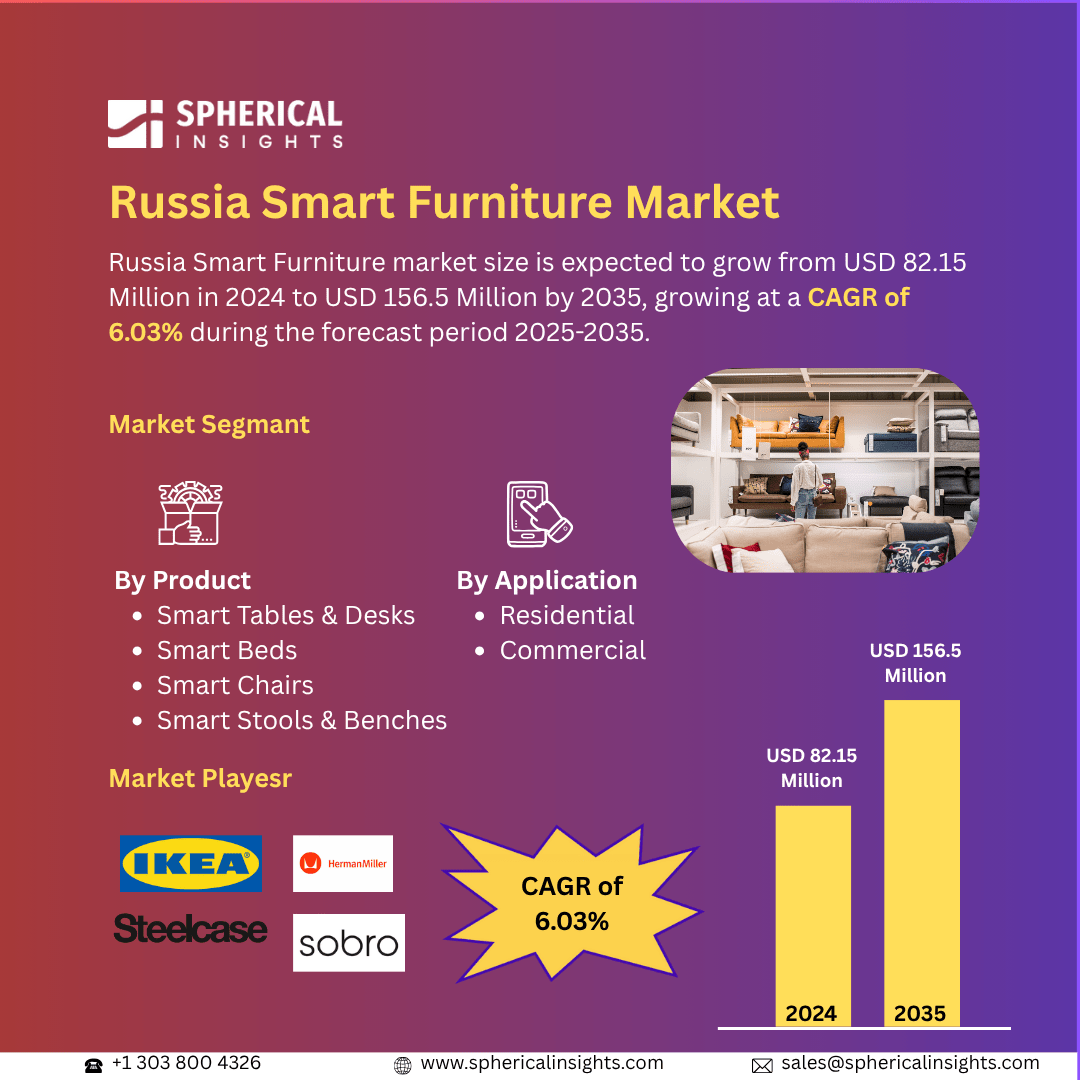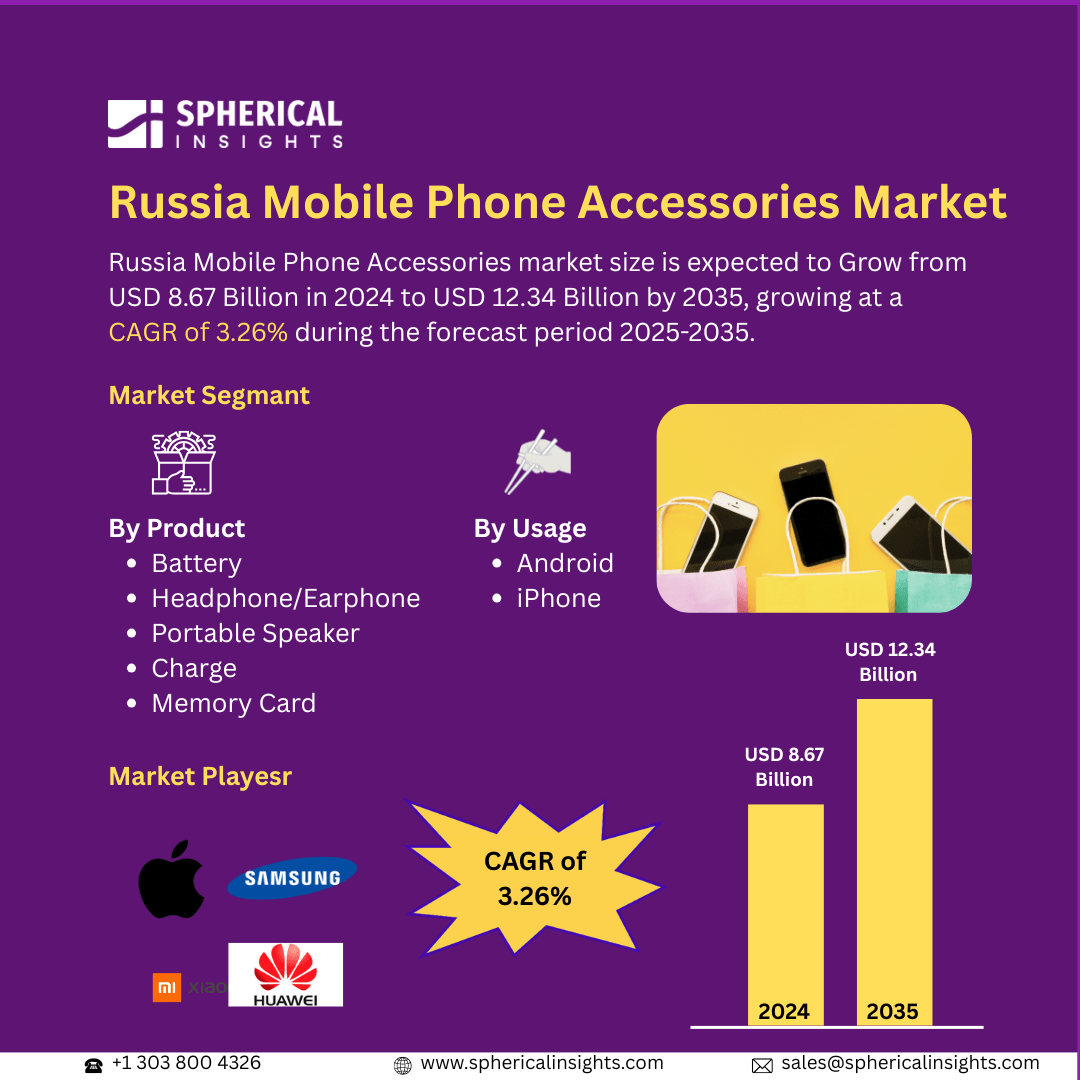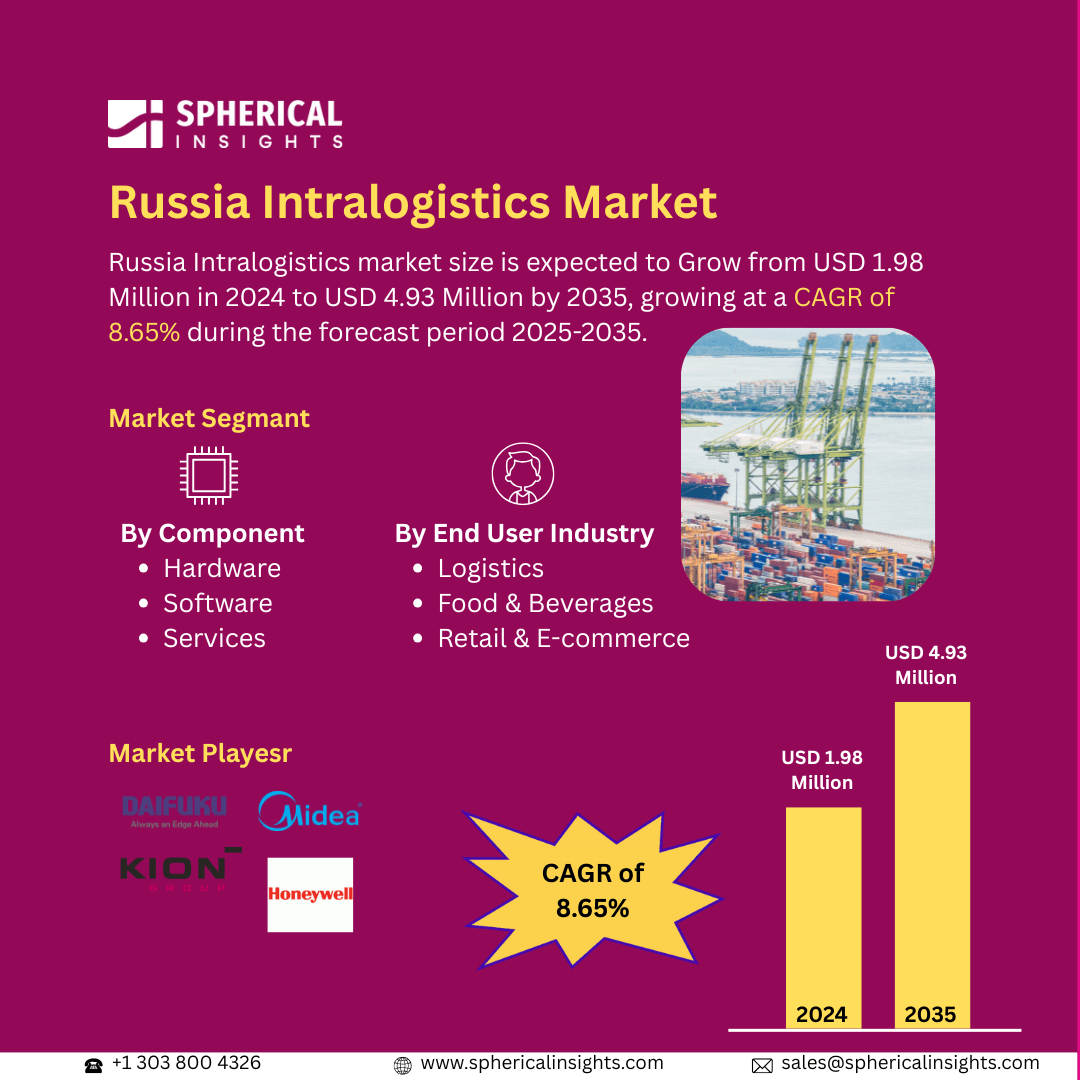Metabolic Tracker Patch Market Summary, Size & Emerging Trends
According to Decision Advisor, The Global Metabolic Tracker Patch Market Size is Expected To Grow from USD 1924 Million in 2024 to USD 4498 Million by 2035, at a CAGR of 8.03% during the forecast period 2025-2035. Rising awareness of metabolic health, increasing adoption of wearable health monitoring devices, and advancements in biosensor technology are key drivers for the market.
Key Market Insights
- Asia Pacific is expected to account for the largest share in the metabolic tracker patch market size during the forecast period.
- In terms of biomarker tracked, the glucose segment accounted for the largest revenue share in the global metabolic tracker patch market size during the forecast period.
Global Market Forecast and Revenue Outlook
- 2024 Market Size: USD 1924 Million
- 2035 Projected Market Size: USD 4498 Million
- CAGR (2025-2035): 8.03%
- Asia Pacific: Largest market in 2024
- North America: Fastest growing market
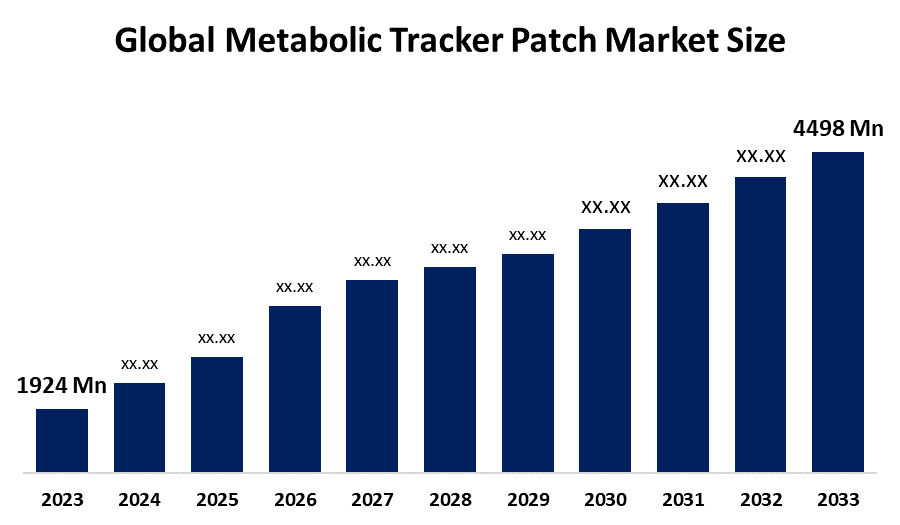
Metabolic Tracker Patch Market
The Metabolic Tracker Patch Market Size centers on wearable devices capable of continuously monitoring metabolic biomarkers in real-time. These patches track glucose, lactate, ketones, cortisol, and multiple other analytes to provide actionable health insights for medical, wellness, and consumer applications. Supported by innovations in microfluidics, biosensors, and IoT-enabled platforms, these devices are widely adopted in diabetes management, fitness, sports performance, and clinical research. Government initiatives promoting preventive healthcare and digital health adoption further boost market growth. Rising focus on personalized medicine and early detection of metabolic disorders positions the market for significant expansion.
Metabolic Tracker Patch Market Trends
- Increased adoption of continuous glucose monitoring (CGM) systems for diabetes and prediabetes management.
- Growth of multi-analyte patches enabling simultaneous monitoring of multiple biomarkers.
- Companies are developing consumer-friendly wellness patches integrating with mobile apps for fitness and lifestyle tracking.
- Partnerships between tech companies and healthcare providers to expand product accessibility and accuracy.
Metabolic Tracker Patch Market Dynamics
Driving Factors: Rising prevalence of metabolic disorders and demand for wearable health devices
The growth of the metabolic tracker patch market size is being strongly propelled by the rising prevalence of metabolic disorders such as diabetes, obesity, and stress-related conditions worldwide. The increasing number of individuals diagnosed with these conditions has created a substantial need for continuous, non-invasive monitoring solutions. In parallel, there is a growing consumer awareness of personal wellness, preventive healthcare, and the benefits of remote health monitoring. This has led to heightened adoption of wearable health devices that provide real-time data on metabolic health. Furthermore, rapid technological advancements in non-invasive biosensing, mobile app integration, and sophisticated data analytics have enhanced the accuracy, usability, and convenience of these patches, making them more appealing to both medical and consumer markets.
Restrain Factors: High device costs and regulatory hurdles
Despite the growing demand, the market size faces certain constraints that can limit adoption. Medical-grade metabolic tracker patches, in particular, are often expensive, which can be a significant barrier for price-sensitive consumers and smaller healthcare facilities. In addition, regulatory approval processes for medical devices can be lengthy and complex, delaying product launches and increasing costs for manufacturers. Privacy and data security concerns also play a role in restraining growth, as users are often wary of sharing sensitive health information through connected devices.
Opportunity: Integration with telemedicine and personalized health platforms
The Metabolic Tracker Patch market presents substantial opportunities through integration with telemedicine and personalized healthcare platforms. Remote patient monitoring, a rapidly growing segment in healthcare, can greatly benefit from these patches, allowing physicians to track patients’ metabolic health in real-time without requiring frequent clinic visits. Additionally, applications in sports performance and fitness tracking are expanding, as athletes and wellness enthusiasts increasingly seek data-driven insights to optimize their health and performance. Advances in AI-driven predictive analytics further enhance the value of metabolic tracker patches by enabling early detection of health anomalies and personalized health recommendations. Such technological integration not only increases the utility of the patches but also opens up new revenue streams for manufacturers through subscription-based digital services, data analytics, and value-added health monitoring platforms.
Challenges: Data accuracy and manufacturing scalability
One of the primary challenges in the metabolic tracker patch market is ensuring consistent and accurate monitoring across diverse populations. Factors such as skin type, sweat levels, activity intensity, and environmental conditions can impact sensor performance, potentially leading to inaccurate readings. Additionally, manufacturing these high-precision sensors at scale poses logistical and technical difficulties. Supply chain constraints, quality control, and calibration requirements can affect reliability and increase production costs.
Global Metabolic Tracker Patch Market Ecosystem Analysis
The ecosystem comprises biomarker suppliers, patch manufacturers, software developers, and healthcare providers. Leading manufacturers focus on improving sensor accuracy, patch longevity, and integration with mobile and cloud platforms. Regulatory agencies ensure compliance with medical device standards, while healthcare providers and fitness companies act as primary end-users. Strategic collaborations between tech and medical companies are accelerating product innovation and market penetration.
Global Metabolic Tracker Patch Market, By Product Type
Single-analyte patches are designed to monitor one specific biomarker at a time, most commonly glucose. These patches are highly preferred in clinical and medical settings due to their accuracy, reliability, and regulatory compliance. They are particularly critical for patients managing diabetes, where precise glucose monitoring is essential for treatment decisions. Single-analyte patches dominate a significant portion of the market, accounting for approximately 55% of the global revenue in 2024, due to their strong adoption in hospitals, clinics, and home healthcare environments. Their focused functionality and established presence in the medical ecosystem make them a key driver of revenue in the metabolic tracker patch market.
Multi-analyte patches provide simultaneous monitoring of multiple biomarkers, such as glucose, lactate, ketones, and cortisol. These devices offer more comprehensive metabolic insights, supporting personalized health, fitness optimization, and preventive healthcare. Multi-analyte patches are increasingly gaining traction in consumer wellness and digital health markets, driven by rising interest in holistic health tracking and the integration of AI-based predictive analytics. Although currently less prevalent in clinical applications than single-analyte patches, multi-analyte patches are experiencing rapid growth, capturing an estimated 45% of the global revenue in 2024, and are expected to expand their market share as technology advances and adoption increases in both medical and consumer segments.
Global Metabolic Tracker Patch Market, By Biomarker Tracked
Glucose-monitoring patches dominate the global metabolic tracker patch market due to the widespread prevalence of diabetes and the critical need for continuous glucose monitoring (CGM) in patient care. These patches are widely adopted in clinical, home, and hospital settings because of their accuracy, regulatory approvals, and proven efficacy in managing diabetes. The high adoption rate in both developed and emerging markets positions glucose patches as the largest contributor to market revenue, accounting for approximately 50% of the global revenue in 2024. The increasing incidence of diabetes, growing awareness of self-monitoring, and supportive healthcare initiatives continue to drive the demand for glucose-focused metabolic tracker patches.
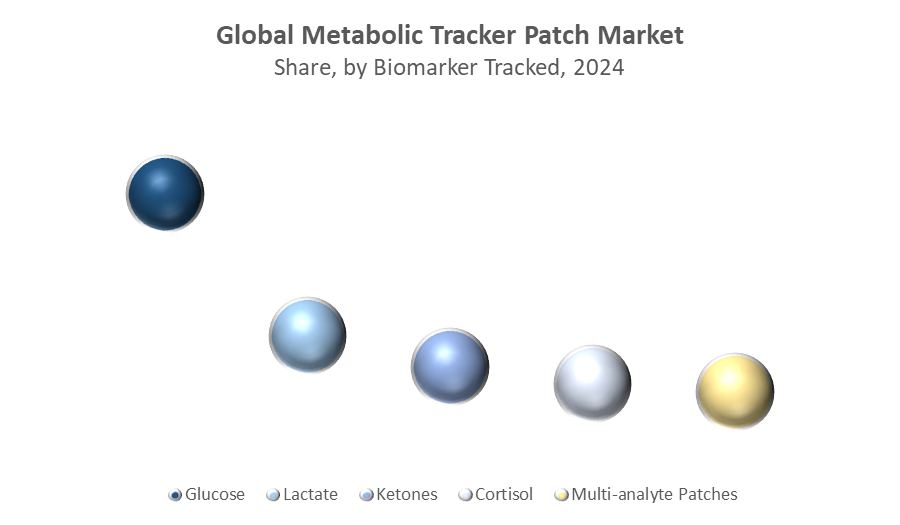
Lactate-monitoring patches are primarily used in sports, fitness, and athletic performance monitoring to assess muscle fatigue, endurance, and recovery in real-time. These patches provide critical insights for professional athletes, fitness enthusiasts, and military personnel, supporting personalized training and injury prevention. While lactate patches occupy a smaller portion of the overall market compared to glucose patches, they are experiencing rapid adoption due to the rising emphasis on sports science and wellness. Lactate patches account for approximately 20% of global market revenue in 2024, with growth expected as wearable technology becomes more integrated into athletic performance and consumer fitness tracking solutions.
The Asia Pacific region is expected to hold the largest share of the global metabolic tracker patch market in 2024. This dominance is driven by a combination of rising health awareness, increasing prevalence of metabolic disorders such as diabetes and obesity, and rapid adoption of advanced healthcare technologies in countries like China, Japan, and India. Growing consumer interest in personal wellness, preventive healthcare, and remote patient monitoring is fueling demand for wearable metabolic tracking devices. In addition, supportive government initiatives, such as digital health programs and subsidies for innovative medical devices, are encouraging adoption. Rapid urbanization, expanding middle-class populations, and increasing smartphone penetration further enable the use of connected health devices, reinforcing Asia Pacific’s leading position in the metabolic tracker patch market.
North America is projected to be the fastest-growing region for metabolic tracker patches during the forecast period. This growth is supported by high healthcare spending, widespread integration of telemedicine, and strong adoption of wearable health technologies across the U.S. and Canada. Increasing demand for remote patient monitoring and personalized healthcare solutions is driving the adoption of both single-analyte and multi-analyte patches. The presence of well-established healthcare infrastructure, coupled with regulatory support and favorable reimbursement policies for digital health devices, further accelerates market expansion. Additionally, rising consumer focus on fitness, wellness, and chronic disease management contributes to North America’s rapid growth in the metabolic tracker patch market.
WORLDWIDE TOP KEY PLAYERS IN THE METABOLIC TRACKER PATCH MARKET INCLUDE
- Abbott Laboratories
- Dexcom Inc.
- Medtronic plc
- Roche Diabetes Care
- Nemaura Medical Inc.
- Cnoga Medical Ltd.
- Integrity Applications Inc.
- Healbe Corp.
- BioSerenity
- PKvitality
- Others
Product Launches in Metabolic Tracker Patch Market
- In March 2024, Dexcom launched its latest continuous glucose monitoring (CGM) patch, incorporating AI-driven predictive analytics for real-time diabetes management. This advanced patch enables patients and healthcare providers to monitor glucose levels continuously while leveraging artificial intelligence to predict trends and potential glycemic events. The integration of AI enhances decision-making for insulin dosing, dietary adjustments, and lifestyle interventions, positioning Dexcom as a leader in next-generation metabolic tracking solutions. The launch is expected to strengthen the company’s market presence and drive adoption of smart, predictive wearable health devices in both clinical and home settings.
- In November 2023, Medtronic introduced a multi-analyte metabolic patch designed for hospital and research applications. This patch allows simultaneous monitoring of multiple biomarkers, improving the efficiency and accuracy of metabolic assessments in clinical trials, hospital care, and specialized research settings. By providing comprehensive metabolic insights, the device supports personalized treatment plans, enhances patient monitoring, and optimizes clinical workflows. This launch highlights the growing trend toward multi-analyte wearable technology and the increasing demand for integrated solutions that cater to both medical and research applications in the metabolic tracker patch market.
Market Segment
This study forecasts revenue at global, regional, and country levels from 2020 to 2035. Decision Advisor has segmented the metabolic tracker patch market based on the below-mentioned segments:
Global Metabolic Tracker Patch Market, By Product Type
- Single-Analyte
- Multi-Analyte
- Medical-Grade Metabolic Patches
- Consumer and Wellness-Grade Patches
Global Metabolic Tracker Patch Market, By Biomarker Tracked
- Glucose
- Lactate
- Ketones
- Cortisol
- Multi-analyte Patches
Global Metabolic Tracker Patch Market, By Regional Analysis
- North America
- Europe
- Germany
- UK
- France
- Italy
- Spain
- Russia
- Rest of Europe
- Asia Pacific
- China
- Japan
- India
- South Korea
- Australia
- Rest of Asia Pacific
- South America
- Brazil
- Argentina
- Rest of South America
- Middle East & Africa
- UAE
- Saudi Arabia
- Qatar
- South Africa
- Rest of the Middle East & Africa
FAQs
Q: Who are the leading companies operating in the Global Metabolic Tracker Patch Market?
A: Key players include Abbott Laboratories, Dexcom Inc., Medtronic plc, Roche Diabetes Care, Nemaura Medical, Cnoga Medical, Integrity Applications, Healbe Corp., BioSerenity, and PKvitality.
Q: What are the main drivers of growth in the Metabolic Tracker Patch Market?
A: Rising prevalence of metabolic disorders, growing adoption of wearable health devices, technological advancements, and preventive healthcare initiatives are the main drivers.
Q: What challenges are limiting growth in the Metabolic Tracker Patch Market?
A: High device costs, regulatory hurdles, data privacy concerns, and technical challenges in sensor accuracy.
Q: Which technological trends are shaping the Metabolic Tracker Patch Market?
A: Key trends include multi-analyte patches, AI-driven analytics, integration with telemedicine, and consumer-friendly wearable designs.
Q: What is the revenue potential of India in this market?
A: India is projected to grow at a CAGR of approximately 12%, driven by increasing digital health adoption and rising metabolic disorder prevalence.
Q: What are the top investment opportunities in the Metabolic Tracker Patch Market?
A: Opportunities include multi-analyte patches, AI-enabled predictive analytics, consumer wellness devices, and expansion into emerging economies.
Q: Which industries are adopting Metabolic Tracker Patches most extensively?
A: Healthcare, fitness and wellness, sports performance, clinical research, and preventive healthcare industries are major adopters.
Q: How have COVID-19 and trade tensions impacted the Metabolic Tracker Patch Market?
A: Supply chain disruptions and regulatory delays initially affected the market, but increased demand for remote health monitoring and telemedicine accelerated recovery.
Q: What is the long-term outlook for the Metabolic Tracker Patch Market?
A: The market is expected to experience strong growth through 2035, driven by wearable health adoption, technological innovation, and preventive healthcare initiatives globally.


